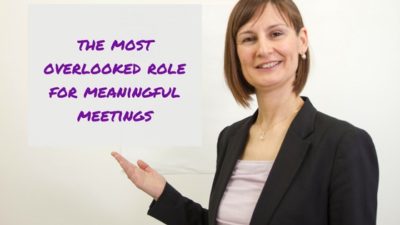I love the emphasis on harmony in Japanese society. But it can lead to two problems in business meetings:
• Unquestioned agreement. Everyone agrees on an idea or approach – often proposed by the most senior person in the room – without questioning whether it’s really the best
• Questioners not being trusted. Anyone who raises questions or objections can be seen as confrontational or uncooperative or even a troublemaker
Assigning one role can help to overcome both these problems.
And it’s the role that teams most commonly overlook.
What is the Challenger Role?
The challenger – sometimes called the devil’s advocate – is someone who purposely questions ideas and assumptions in meetings.
This questioning is not about picking fault or criticizing. It’s done with a positive intention to help meeting participants become aware of what they might have missed and help them find the very best solutions to their problems rather than sub-standard or stop-gap solutions.
How Does the Challenger Role Work?
If you assume the challenger role without clarifying it, you risk being seen as someone who’s disrupting the meeting.
Ideally, the facilitator should ask for someone to play the challenger role.
But if the facilitator or person leading the meeting doesn’t ask for a challenger, you can propose that you or someone else take the role.
If this role is being introduced for the first time, it’s important to take the time to clarify what it means and make sure that everyone understands and is comfortable with the concept.
You might say,
“I’ve been reading about the benefits of having someone play the role of the challenger in meetings by questioning ideas and assumptions. The aim is to achieve the best outcome for everyone – it’s not about criticizing what people say or being uncooperative. Could we perhaps try it out in this meeting? If everyone agrees, I’m happy to assume the role this time. Since it’s my first time, I might not do it very well and I’d appreciate your feedback at the end of the meeting, so that I can do it better another time. What do you think?”
Then, once you have everyone’s agreement, proceed with the meeting and raise questions where you have doubts or hear a contradiction or don’t fully understand something.
As with other communication habits that I suggest, I encourage you to test this one in a small meeting with close colleagues first.
Then gradually build up to using it in larger meetings with higher stakes.
One other approach, rather than having an assigned challenger role, is to make questioning ideas and assumptions part of the way the meeting is run. In other words, everyone assumes the challenger role. This makes it easier for anyone to raise questions without appearing confrontational. It’s especially valuable for people who have relevant knowledge or expertise but find it difficult to speak up.
Creating space for that knowledge or expertise to come out can benefit everyone and help to achieve the very best solutions.
To make this easier, here is a list of 25 questions to make meetings more meaningful and productive. Click here to download it now.

